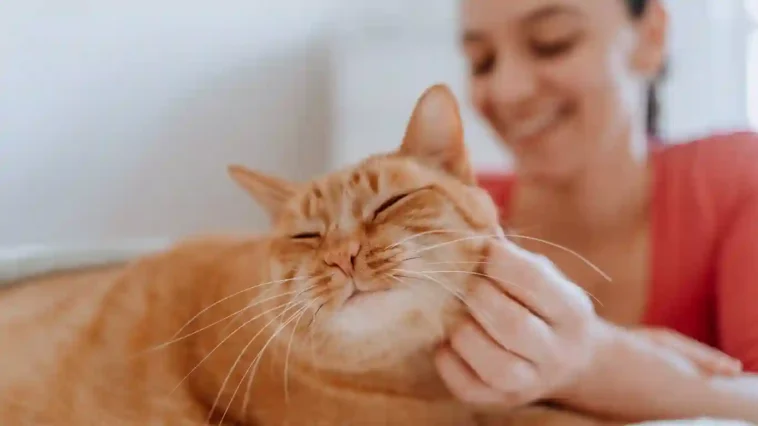Think You Know How to Take Care of Your Cat?
If you’ve ever shared your life with a cat, you know they’re not just pets — they’re family. But caring for them goes beyond feeding and cuddling. From choosing the right food to spotting early signs of illness, every detail matters when it comes to your cat’s well-being.
What This Quiz Is About
This short quiz is here to test how much you really know about proper cat care. It covers everything from diet and grooming to health and behavior. Whether you ace it or learn something new along the way, it’s a great way to sharpen your understanding and make sure you’re giving your cat the best care possible.

- Question of
What is the ideal age to start vaccinating kittens?
- 2 weeks
- 4 weeks
- 8 weeks
- 16 weeks
Correct Wrong
Kittens should start receiving their core vaccinations at around 8 weeks of age to build immunity against common infectious diseases.
- Question of
How often should you clean a cat’s litter box?
- Once a week
- Every other day
- Once a month
- Daily
Correct Wrong
Cleaning the litter box daily helps prevent odors, reduces stress for your cat, and keeps their environment hygienic.
- Question of
Which of the following is toxic to cats?
- Tuna
- Cooked chicken
- Chocolate
- Carrots
Correct Wrong
Chocolate contains theobromine and caffeine, which are toxic to cats and can cause serious health issues.
- Question of
How often should adult cats visit the vet for a routine check-up?
- Once a year
- Only when sick
- Every 2–3 years
- Every 6 months
Correct Wrong
Annual vet visits help catch potential health problems early and keep your cat up to date on vaccinations.
- Question of
What does it usually mean when a cat’s tail is upright and quivering?
- It’s scared
- It’s happy or marking territory
- It’s sick
- It’s angry
Correct Wrong
An upright, quivering tail usually means a cat is either very happy to see you or is marking its territory by spraying.
- Question of
What’s a safe way to prevent hairballs in cats?
- Giving milk daily
- Feeding raw meat
- Letting them lick plastic
- Regular grooming
Correct Wrong
Brushing your cat regularly reduces loose fur that gets swallowed and turns into hairballs.
- Question of
Which nutrient is essential in a cat’s diet?
- Vitamin C
- Taurine
- Beta-Carotene
- Carbohydrates
Correct Wrong
Taurine is an essential amino acid for cats. Without it, they can develop heart and vision problems.
- Question of
How should you introduce a new cat to your home?
- Keep it in one room at first
- Let it roam free immediately
- Bathe it right away
- Take it to the vet later
Correct Wrong
Keeping a new cat in a single room helps reduce stress and allows for a gradual introduction to the household.
- Question of
What’s the average healthy temperature range for cats?
- 96–98°F
- 99–102.5°F
- 103–105°F
- 106–108°F
Correct Wrong
A cat’s normal body temperature ranges from 99 to 102.5°F. Anything outside this may indicate illness.
- Question of
How often should you trim your cat’s nails?
- Never
- Every 6 months
- Every 2–4 weeks
- Every day
Correct Wrong
Regular nail trims every 2–4 weeks prevent overgrowth, reduce scratching damage, and keep paws healthy.
- Question of
Which of the following is NOT a sign of a healthy cat?
- Bright eyes
- Shiny coat
- Playfulness
- Constant hiding
Correct Wrong
Healthy cats are usually alert and curious. Constant hiding may signal stress, fear, or illness.
- Question of
Why should cats not be fed dog food?
- Dog food tastes bad to cats
- It contains too much fat
- It lacks essential nutrients like taurine
- It’s too spicy
Correct Wrong
Dog food doesn't contain enough taurine and other nutrients that cats need to stay healthy.
- Question of
Which item is dangerous for cats to chew on?
- Cardboard
- Cat grass
- Electrical cords
- Sisal rope
Correct Wrong
Fleas cause itching and irritation, leading to constant scratching or over-grooming.
- Question of
What is a common symptom of fleas in cats?
- Limping
- Excessive scratching
- Sneezing
- Shivering
Correct Wrong
Chewing electrical cords can cause serious injury or even be fatal for cats.
- Question of
What’s the safest type of litter for kittens?
- Non-clumping, unscented
- Clumping clay
- Silica gel crystals
- Scented clumping
Correct Wrong
- Question of
Why do cats knead with their paws?
- To sharpen claws
- To stretch
- To threaten other animals
- It’s a comforting behavior from kittenhood
Correct Wrong
- Question of
How can you tell if your cat is dehydrated?
- Wet nose
- Bright eyes
- Purring too much
- Gums are dry and sticky
Correct Wrong
- Question of
What’s the best way to prevent cat obesity?
- Free feeding all day
- Portion control and playtime
- Giving table scraps
- Skipping meals
Correct Wrong
- Question of
Which of the following should be included in regular grooming?
- Trimming whiskers
- Applying perfume
- Brushing teeth with human toothpaste
- Brushing fur
Correct Wrong
- Question of
What should you do if your cat suddenly stops eating?
- Take it to the vet
- Wait a few days
- Change its food
- Give it dog treats
Correct Wrong
This post was created with our nice and easy submission form. Create your post!









GIPHY App Key not set. Please check settings